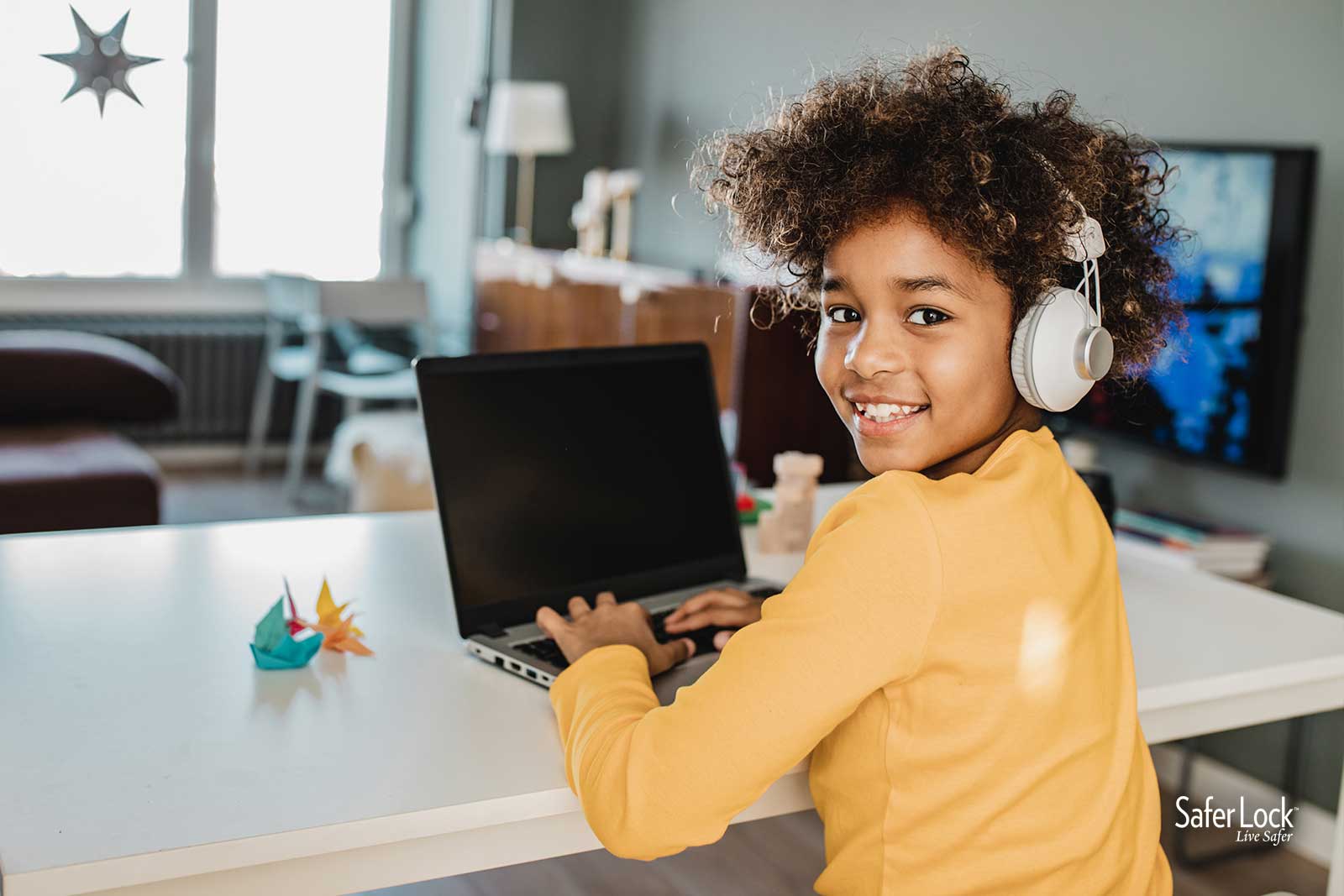As the new academic year approaches, many parents of school-aged children find themselves in unimaginably difficult situations. With many schools opting for virtual learning due to the COVID-19 pandemic, more children will be left at home during the day while working parents return to their jobs. Whether completely unsupervised or under the supervision of an older sibling, there are all kinds of inherent dangers parents must be aware of and plan for before the school year begins.
Develop a Distance-Learning Safety Plan
It all starts with formulating a distance-learning plan for the school year. This includes knowing exactly how long your children will be home alone each day, as well as the family protocols you’ll implement to keep them as safe as possible.
Know Your Local Ordinances
Many states have ordinances in-place that prevent children under a certain age from being left home alone, so make sure you’re aware of (and complying with) your local laws. Your state may have limits on the amount of time your children can be left in the house alone each day.
Establish Ground Rules
Next, make sure that all children who will be home alone are clear on the household rules while you’re away. This includes rules regarding which friends (if any) are permitted at the house, what activities are permitted (and which are not), and how many hours will be spent on school work. Talk to your kids about these rules to make sure there is a mutual understanding, and consider posting a list of these rules in an easily accessible area of the home.
Stay in Touch
Have a plan for staying in touch with your children throughout the day. Make sure every child who will be home is comfortable using a phone and is able to call 9-1-1 with their location in the event of an emergency.
Program emergency contacts into your child’s cell phone, including the number for Poison Control: (800) 222-1222
If your children don’t have cell phones of their own, consider purchasing a house phone so you can easily be reached when needed. Post a list of emergency numbers next to the phone.
Address Common Child Safety Issues
Unfortunately, some child safety issues are more common than others. While it’s important to have conversations with your child(ren) about what’s permitted at home and what’s not, going the extra mile to remove or secure certain things in the household can help prevent the most common and avoidable causes of injury.
Lock Medications
Prescription medication abuse is a very real and growing problem among teens and children across the United States. If your children know where your medications are stored inside the home, this could be a recipe for disaster.
Before the school year kicks off, take the time to lock up all prescription medications in your home. A locking medicine box or pill bottle with a combination lock can help keep the most addictive, dangerous, or potent prescriptions secure.
Tobacco and/or Alcohol
When parents are away, children and teens may also begin to experiment with drug and/or alcohol use. Unfortunately, even if you feel like you can trust your child not to partake in this kind of activity, peer pressure is very powerful. For this reason, it’s important to make sure that alcoholic beverages and tobacco are stored somewhere that is inaccessible to your children while you’re not at home. Many parents will keep alcohol stored in a locked liquor cabinet — and tobacco products can be kept in the same lockbox where you keep prescription medications.
Firearms
If there are any firearms in your home, now is also a good time to make sure they’re locked up and out of your children’s reach. Ideally, firearms should be stored in a safe and should be unloaded at all times. Ammunition should be stored separately from the firearm itself as an added layer of protection. This may also be a good time to review your state’s laws and regulations as they relate to gun safety and storage to ensure that you’re within compliance.
Swimming Pools
As much fun as swimming pools can be, it’s generally best to keep pools off-limits to children of all ages when parents and guardians are not around. If your home has a pool, make sure your children are aware of any rules you may have regarding swimming and/or having friends over to swim. If you don’t want your pool being used while you’re not home, you might even consider setting up a security camera with motion detection so that you’ll be alerted if anybody is in the pool area while you’re away.
The Bottom Line on Distance Learning and Child Safety
This should be the time of year where parents are getting children ready to return to school. Unfortunately, our reality is very different — and only time will tell how much longer parents and students will need to accommodate distance-learning plans. The good news, though, is that having a plan in place and being proactive about common safety dangers can help your children have a safe and productive school year, no matter where their learning takes place.




